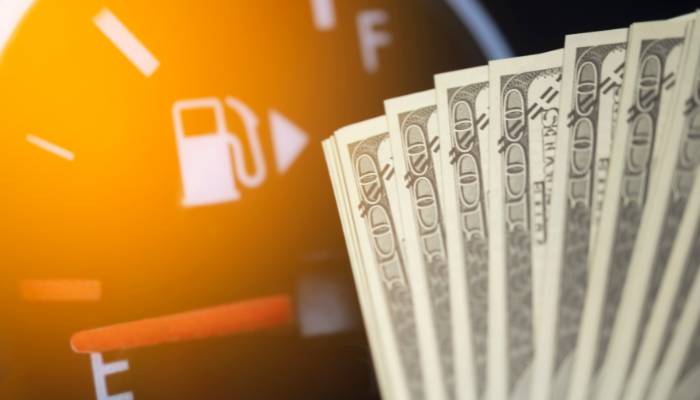Improving gas mileage in cars is important because it reduces emissions of greenhouse gases, which are responsible for climate change, and reduces our dependence on oil. Improved gas mileage also cuts down on fuel costs for drivers and helps to reduce air pollution. Let us check 9 easy ways to improve gas mileage.

- Make sure your tires are properly inflated: Maintaining proper tire inflation can greatly improve your car’s gas mileage. Underinflated tires reduce your car’s fuel efficiency because they require more power to roll. This means your engine needs to work harder, using more fuel. Check your tires regularly and ensure they are properly inflated according to the manufacturer’s recommendations. This small task can make a big difference in your car’s fuel efficiency and help you save money at the pump.
- Avoid aggressive driving and unnecessary acceleration: Avoiding aggressive driving and unnecessary acceleration can help improve gas mileage by up to 33%. Aggressive driving, such as speeding and rapid acceleration, can drastically reduce fuel efficiency by forcing the car to use more fuel to maintain the higher speed. Unnecessary acceleration is also inefficient, as the car must expend more energy to accelerate to higher speeds. By avoiding these behaviors, drivers can make their cars more efficient and reduce their fuel costs.
- Use cruise control on the highway: Using cruise control on the highway helps to improve gas mileage by allowing the vehicle to maintain a constant speed. This reduces frequent acceleration and deceleration of the vehicle, which is a major cause of poor fuel economy. Cruise control also helps to reduce driver fatigue, as the driver can set the speed and then relax, allowing the vehicle to maintain a steady speed.
- Combine errands and trips to reduce the number of times you start and stop your car: Combining errands and trips to reduce the number of times you start and stop your car can improve your car’s gas mileage by reducing the number of times your car needs to start and stop. This can reduce the amount of fuel your car needs to use in order to get where it needs to go. When you start and stop your car multiple times, each time your car needs to use more fuel in order to get back up to speed. By reducing the number of times your car needs to start and stop, you can save fuel. Additionally, by combining errands and trips, you can reduce the amount of time you spend driving, which can also save fuel.
- Lighten your car’s load by removing unnecessary items from the trunk: Lightening your car’s load by removing unnecessary items from the trunk can significantly improve your gas mileage. By removing items from the trunk, you are decreasing the total weight of your car, which reduces the amount of energy your engine needs to expend in order to move the car. This, in turn, can lead to improved fuel economy, as your engine is not working as hard to move the car. Additionally, having a lighter car makes it more aerodynamic, which further reduces the amount of energy required to move the car. As a result, you can expect to see improved gas mileage when you lighten the load of your car.
- Avoid idling for long periods of time: Idling for long periods of time can significantly reduce fuel efficiency. Idling causes the engine to run without having to power any accessories, such as the air conditioning, radio, or lights. This causes the engine to use more fuel than it needs to. By avoiding idling for long periods of time, you can improve your gas mileage and reduce your emissions. If you are going to be stopped for more than a few seconds, it is best to turn off your engine. This will help you to save fuel, reduce emissions, and save money on fuel costs.
- Choose the most fuel-efficient route when driving: Choosing the most fuel-efficient route when driving can help to improve gas mileage by reducing the amount of time spent driving, as well as reducing the amount of fuel used. By using a navigation system or map, drivers can determine the shortest and most fuel-efficient route to their destination. Factors such as traffic, road conditions, and terrain can all affect the fuel efficiency of a route, so planning ahead and considering these factors can help to maximize fuel efficiency. Additionally, avoiding aggressive driving, such as rapid acceleration and braking, can also help to improve gas mileage.
- Use the manufacturer-recommended grade of motor oil: Using the manufacturer-recommended grade of motor oil improves gas mileage by reducing friction between moving components in the engine. Lower levels of friction can result in greater efficiency, which in turn leads to improved fuel economy. This is because the motor oil helps to reduce drag on the engine and its components, resulting in less power being consumed. Additionally, motor oil helps to keep the engine clean and free from debris which can also increase fuel efficiency. Finally, using the correct grade of motor oil can help to protect the engine from extreme temperatures, which can help to reduce engine wear and tear and further improve gas mileage.
- Have your car regularly serviced to keep it running efficiently: Having your car regularly serviced can help to keep it running efficiently and can improve your car’s gas mileage. Regular maintenance, such as oil changes, tune-ups and air filter replacements, can help to ensure that your car is running optimally. By having regular service, you can help to reduce the amount of fuel your car needs to travel the same distance. This can also help to reduce the amount of emissions released into the atmosphere. Additionally, regular service can help to reduce the likelihood of expensive repairs in the future.
